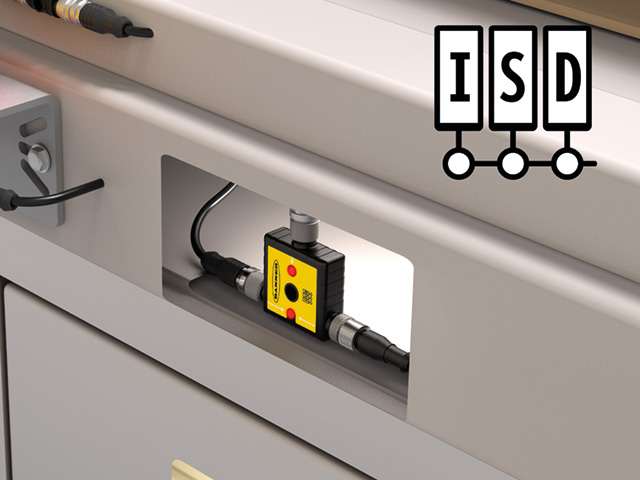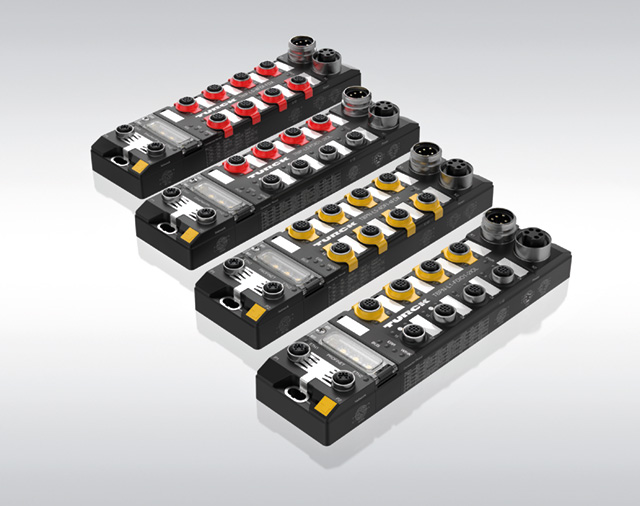
Employing In-Series Diagnostics for machine safety devices can enable a faster response in the event of a production stoppage while helping to keep personnel protected, says Ian Meredith, UK Sales Manager at Turck Banner.
Personnel safety systems on moving machinery are often seen as a necessary evil. In order to function correctly, a safety device has to be self-checking to detect any internal component failure, which adds more complexity and costs compared to other devices.
It does not enhance the machine’s performance and has the ability to stop the production at any point, hence the ‘evil’ label is applied despite having the very positive function of protecting people from dangerous motion.
Once an emergency stop has occurred, assuming that there are no other emergencies to deal with, restarting production is usually the highest priority.
Good diagnostic information is key to achieving this in the most efficient way. Gate interlocks and emergency stop buttons are normally the main problem area for diagnostics, as they are typically linked in series, on long chains.
While this reduces costs and simplifies installation, it makes identifying which E-stop has been pushed or which door has been opened difficult as there are multiple devices connected to a single input. The alternative is to wire each individual point back to an input, but this is very costly.
The introduction of In-Series Diagnostics (ISD) – allowing diagnostic data from devices in a safety system to be more easily accessed – eliminates this problem.
Using a four wire series chain, up to 32 ISD devices can be added to each chain. Either a safety controller with ISD built in or an external ISD module monitors the status of every device. This is separate from the safety function.

As well as monitoring their activated / not activated status, each ISD device provides an array of additional information, including a unique identifier, internal temperature and voltage, along with device-specific details such as alignment and distance between the sensor and actuator of a safety switch. The system will send warning alarms if a device is close to the tripping point, so that remedial action can be taken before a nuisance trip occurs, for example from a door sagging on its hinges.
When a device is tripped, the location of the device is identified and can be displayed through an HMI (human-machine interface), indicator lights or other means, such as a smartphone app, or by turning the machine lighting red in the vicinity of the activated device. This clear and unambiguous information can quickly and efficiently guide an operator to the device that was activated, allowing the machine to be restarted with minimal downtime.
Devices with inbuilt ISD include RFID safety switches and illuminated E-stops. There is also an ISD Connect device which connects conventional emergency stop buttons or safe mechanical switch contacts, such as those on a safety locking switch, to an ISD chain, therefore extending the diagnostic functions to those devices.
The ISD controller can connect to IO-Link, allowing the diagnostic data to be sent to cloud-based OEE (overall equipment effectiveness) systems, where analysis of the data can highlight areas that performance improvements can be made.
Turck Banner has produced an IP67/IP69K field mountable safety module with a glass fibre reinforced housing and fully potted electronics. This makes them robust enough to withstand the rigours of being mounted on a machine without the need for a cabinet.
Each module can operate in conjunction with an external safety controller or independently as a decentralised safety controller.
Benefits of the full block module include cost savings and expandability over a traditional cabinet mounted solution. The hybrid module has all the advantages of the full block module and can be combined with the ISD/IO-Link module to create a self contained safety system, with operator guidance to any doors, gates and E-stops that have been activated. As all are in IP67 field mountable devices, a control cabinet is not required.
Safety systems are an integral part of machines with dangerous motion where personnel have access. No one wants to expose their operators to potential harm without a safety system to protect them. Employing good diagnostics, combined with good operator guidance, can improve efficiency and productivity while offsetting the cost of a good safety system.
www.turckbanner.co.uk | enquiries@turckbanner.co.uk | t: 01268 578888

